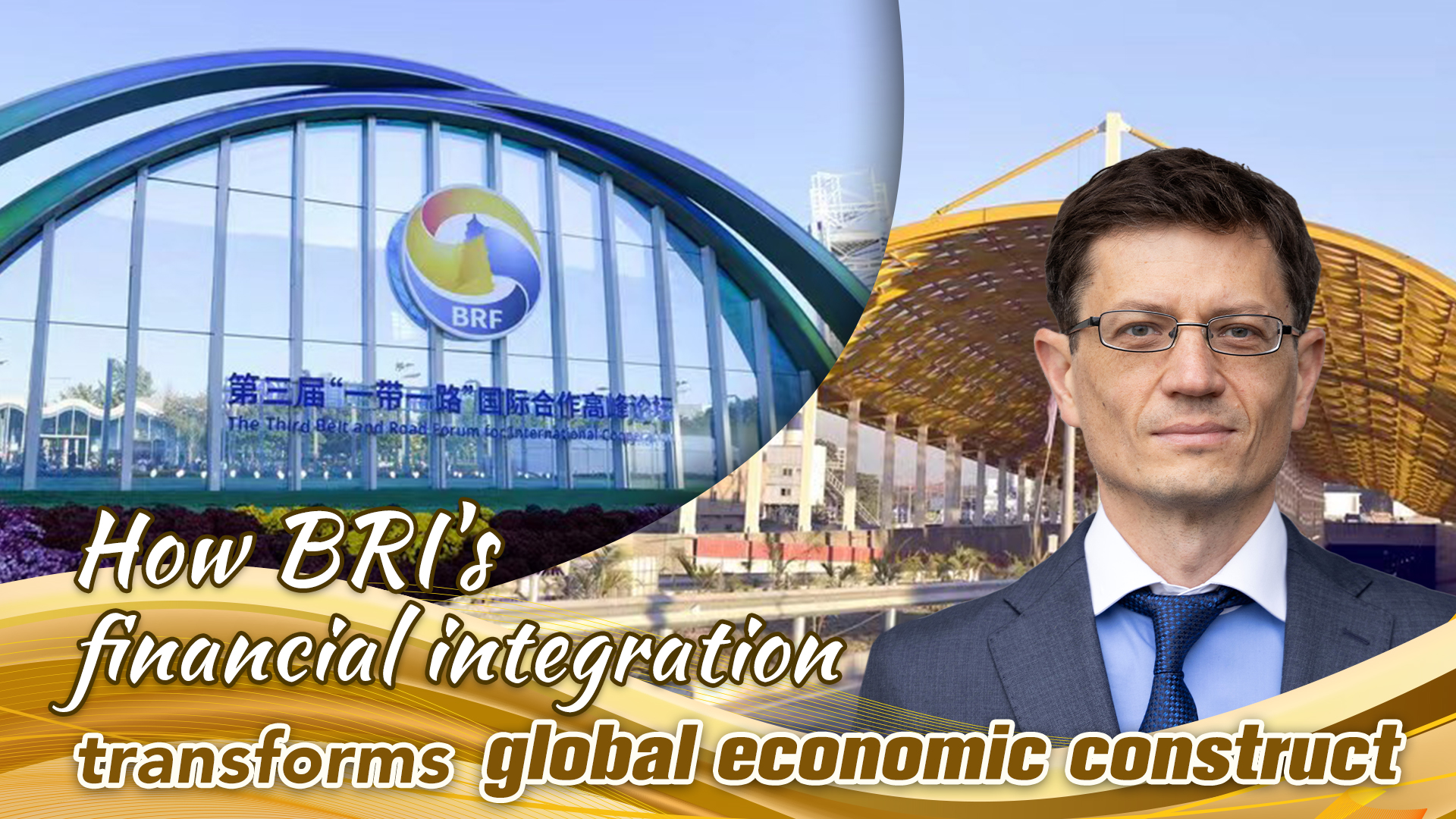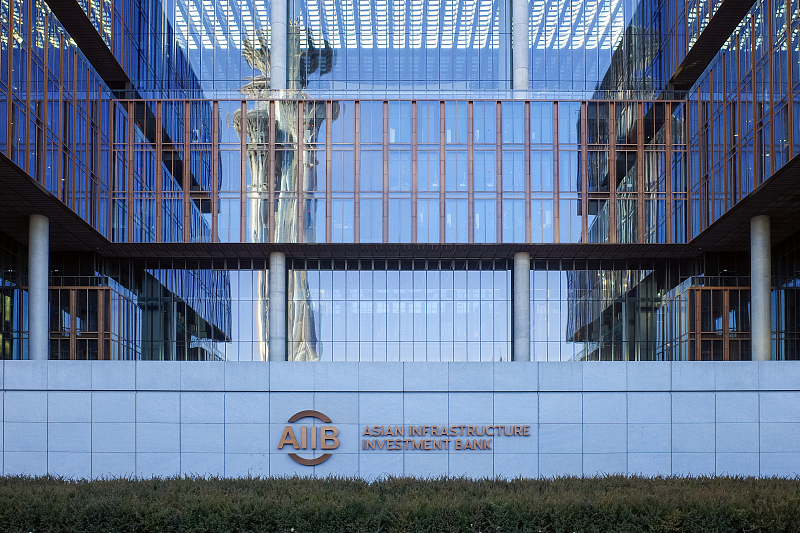
Editor's note: Since its inception in 2013, the Belt and Road Initiative (BRI) has transformed ideas into actions, from a vision into reality, and from a general framework into concrete projects. Evaluating the BRI's accomplishments over the last decade raises questions. How has the BRI advanced policy coordination, infrastructure connectivity, unimpeded trade, financial integration, and closer people-to-people ties? "BRI: A Road for the Common Good" is a five-part series that delves into the BRI's achievements of the past decade. The third essay explores financial integration.
China's Belt and Road Initiative (BRI) is perhaps the most important of China's global initiatives that since its inception has delivered greater connectivity and growth across the developing world. The partnership that China forged across the globe through BRI has engendered competitive pressures in the Western world that sought to come up with a credible response. For the time being, however, the BRI continues to lead the "connectivity" domain and has the potential to serve as a basis for new formats and modalities of world economic cooperation.
As the white paper titled "The Belt and Road Initiative: A Key Pillar of the Global Community of Shared Future" correctly stated, "Financial integration is an important pillar of BRI cooperation. Participating countries and relevant institutions have carried out multiple forms of financial cooperation, created new models, expanded the channels, diversified the parties involved, and improved the mechanisms for investment and financing."
A look back at the track record of the past decade reveals a number of important achievements across a number of key areas, including transportation connectivity and financial cooperation. Over the course of that decade, the BRI has generated nearly $1 trillion of investment and more than 3000 projects across the global economy.
In the financial sphere, this expansion in the BRI's global reach was accompanied by a build-up in the project portfolios of new development institutions such as the Asian Infrastructure Investment Bank (AIIB). According to the white paper, by the end of June 2023, "the number of AIIB members had reached 106, and the bank had approved 227 projects with a total investment of $43.6 billion."

The headquarters building of the Asian Infrastructure Investment Bank (AIIB) in Beijing, capital of China, February 1, 2023. /CFP
The headquarters building of the Asian Infrastructure Investment Bank (AIIB) in Beijing, capital of China, February 1, 2023. /CFP
Apart from these quantitative figures, there is also the qualitative aspect of the greater scope provided by the BRI for the use of the Chinese yuan in financing connectivity projects. The use of the Chinese currency has already been actively employed in various tracks of the BRI development, serving to boost the internationalization of China's currency and its use in cross-border transactions.
Indeed, the yuan-financed BRI projects played a key role in advancing the international prominence of China's currency, raising its share in the financing of development projects. According to SWIFT statistics, the share of yuan in trade finance has nearly doubled in the period from December 2020 to December 2022 – from 2 percent to 3.9 percent.
On the back of the greater use of the yuan in BRI-related transactions as well as in foreign trade payments, there is also the greater use of China's currency as a reserve currency. In particular, as of the end of 2022, the yuan accounted for 5.37 percent of Brazil's international reserves making it the second largest reserve currency for its Latin American BRICS partner.
Furthermore, in August 2023, Argentina declared that it would use yuan as to repay part of its payment to the International Monetary Fund. The inroads made by the Chinese currency may then provide greater scope for other national currencies to be used in financing development projects both in the context of the BRI as well as other connectivity projects across the Global South.
Besides, China has signed bilateral currency swap agreements with 20 partner countries and established renminbi (RMB) clearing arrangements in 17 partner countries. The number of participants, business volume, and influence of the RMB cross-border payment system have gradually increased, effectively facilitating trade and investment.
Given the track record that the BRI has already established in the world economy, it has the potential to introduce a new paradigm in international economic diplomacy that is predicated on cooperative platforms targeting connectivity.
The reigning paradigm in international economic diplomacy in the preceding decades was based on free-trade agreements that frequently favored the more competitive and mature advanced economies. Partnerships built around investment cooperation in the sphere of connectivity open the possibilities for "win-win" outcomes via creating new platforms among regional development banks and regional financing arrangements with the goal of building common portfolios of priority projects for developing economies.
What the experience of BRI's financial integration shows is that in the sphere of economic cooperation, each economy needs to think of itself not just as a mass-production factory that churns out exports and imports whatever is needed from the outside world. There also needs to be a vision and a strategy of how the economy performs the role of a bridge in its region, continent and the broader global economy. Serving as a bridge through connectivity projects in the world economy needs to be part of any economy's strategy of external economic partners.
In this respect, there is another important transformative aspect of the BRI on the global economy – the change in the mindset that connectivity introduces into the decision-making of economic agents. Contrary to the model of "rational individuals" seeking profit maximization in the standard models of neo-classical economics, connectivity focuses more squarely on "win-win" outcomes. This "connectivity mindset" highlighted by financial integration, whether at the micro-level of investment projects or the macro-level of international economic cooperation, is in many ways closer to empathy and economic sustainability that are at the heart of the transformation of the global economic construct that the international community is seeking to achieve.
Yaroslav Lissovolik, founder of "BRICS+ Analytics" and a member of the Russian International Affairs Council (RIAC).
(If you want to contribute and have specific expertise, please contact us at opinions@cgtn.com. Follow @thouse_opinions on Twitter to discover the latest commentaries in the CGTN Opinion Section.)